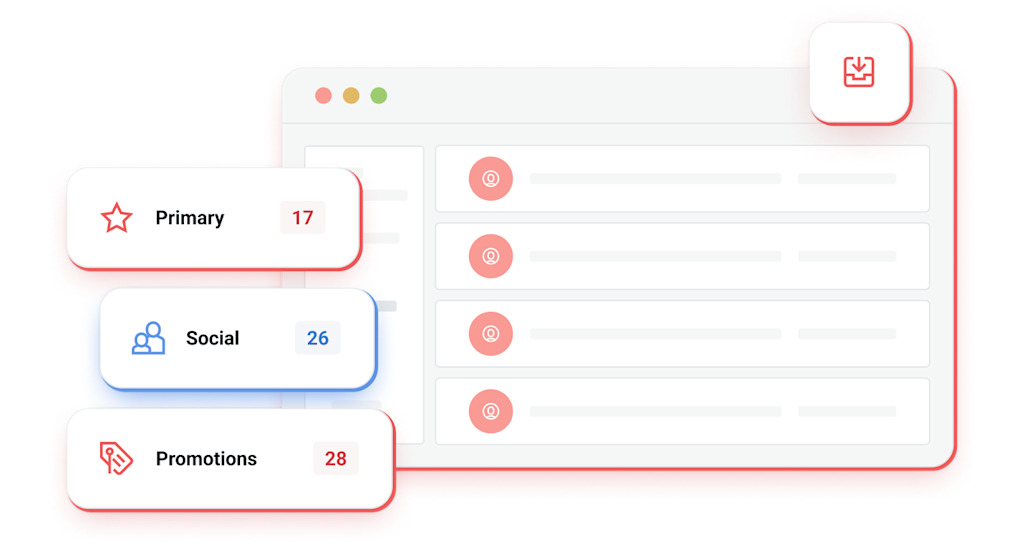
Improve email deliverability and performance
Managing an email database and your various programs – email marketing, transactional messages, and more – is no small task. From building email lists to optimizing email deliverability, there are dozens of factors that impact how your company’s emails will perform. The last thing you want to worry about is how to deal with emails that bounce back and aren’t delivered. But addressing this issue is a critical part of optimizing your email deliverability. Luckily, bounce management software can help automate tasks to accomplish this.
ABOUT BOUNCES
Why do emails bounce back?
Email messages that were not successfully delivered to an email address constitute an email bounce. This will result in an automatic email response from the mail server or mailbox provider like Gmail, notifying the email sender of the non-delivery and other information, including the time and date that the email bounced and the reason for the bounce with the associated RFC code.


HARD VS. SOFT
The two types of email bounces
Soft bounces
Email messages that are sent to a valid email address but are not delivered to the recipient’s inbox are considered a soft bounce. This could be because their mailbox was full, which can happen with mailbox providers such as Microsoft Outlook, the email was too large, or the mail server was down. Email addresses that soft bounce are still valuable and should not be blocklisted. The best bounce management software can automatically detect this, and try these emails again.
Hard bounces
Messages may permanently fail because the email address doesn’t actually exist or is no longer valid. For this bounce type, bounce management software can automatically suppress these emails from your email lists. This will help you keep a clean email list and a positive email reputation.
IMPROVEMENT
Why managing email bounces is so important
How you manage bounced emails can have a big impact on your company’s sender reputation – and ultimately its email deliverability and email server. If you continue to send emails to an address that no longer exists or record a higher than average bounce rate, the email service provider may recognize this as bad list management practices, such as purchasing third-party email lists, failing to recognize opt-outs and unsubscribes, or not adhering to other email best practices. When this happens, your sender reputation may get penalized.

BEST PRACTICES
How to reduce bounced emails
Reducing bounces and email non-delivery boils down to a few things: building and monitoring strong email lists that will be less likely to bounce emails to begin with, following some basic email best practices, and automating tasks to flag and remove bad email addresses. Easier said than done, but here are a few things you can do:
1. Validate email addresses when you collect them.
Mailgun’s email validation API can easily be implemented into forms to prevent typos, such as misspelling “@gmail” in the address, and help maintain good list hygiene.
2. Be transparent with visitors about what they’re signing up for.
Make it clear to the user what exactly it is that they’re signing up for. If submitting their email address will subscribe them to your blog, make sure that’s obvious. For even more transparency and happier users, indicate the frequency of your sending so they know what to expect. (And, by the way, you can subscribe to our blog for weekly updates.)
3. Give recipients frequency options.
Have you ever been on a list that emails you all the time? You like them, but you don’t like them that much. By giving the user the ability to choose the frequency and types of messages they receive from you, you’ll retain more users and reduce unsubscribes.
4. Be careful using incentives.
If you say you’ll give someone something for free, you expose yourself to bad email addresses or throwaway addresses. A lot of people will sign up and then unsubscribe just to get your free stuff. Your goal is to build a highly engaged user base that wants to receive the messages they get. Incentives just muddy this.
5. Have recipients double opt-in.
By sending a confirmation request to the recipient’s mail, you not only check that the email address is valid, but also allow them to confirm that they do in fact want to receive email from you.
6. Avoid purchasing or renting email lists.
While this may be tempting as a way to drive a short-term boost to an email campaign, lists from third parties or partners often result in high bounce rates, error messages, unsubscribes, and other potential failures.

SIGN UP TODAY
Get started with email bounce management
Mailgun’s bounce management software provides several tools to help track and automate tasks that will improve email delivery. Sign up today to discover how Mailgun can improve your email performance.
Check out our plans to bundle together features for better deliverability.
OTHER FEATURES
Explore beyond bounce management software
Mailgun has a variety of features for companies in need of email bounce management.
Products
Solutions
Overcome email challenges



